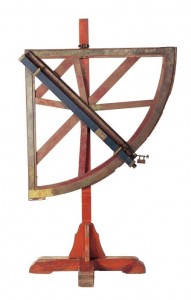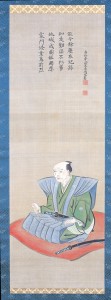佐原の伊能忠敬
文/公益社団法人 副会長 星埜由尚
佐原の偉人、伊能忠敬が19世紀初頭に測量隊を率いて全国測量を行い、精度の高い日本地図を作成したことは、学校教育においても取り上げられ、広く知られている。しかし、佐原時代の忠敬については、全国測量に比べると知られていないことが多い。
忠敬は、1745年上総国山辺郡小関村で小関(神保)貞恒の次男として生まれた。長じて17才の時、佐原村の名家伊能家の跡取り娘ミチの婿となり、手広く商売を行い、資産家であった伊能家の舵取りを任されることとなった。伊能家に婿入りするに当たり、幕府儒者林鳳谷から「忠敬」の名乗りをもらっている。
ミチとの間には、長女イネ、長男景敬、次女シノを儲けた。忠敬は、江戸に支店を出すなど家業を順調に進展させていたが、この頃は凶作が続き、特に天明年間には、浅間山の噴火、利根川の洪水などもあり、天候も不順で、天明の大飢饉(1783~1788)と言われる未曾有の凶作の影響を佐原村も受けた。凶作時には、窮民に救恤米や見舞金を出すなど、伊能家は救貧活動に力を尽くしたと言われている。利根川の洪水には、堤防修築のために奔走した。これらの功績により、忠敬は、佐原を知行所としている旗本津田氏から苗字帯刀を許された。
忠敬が作成したと考えられている佐原の利根川河岸の測量図が知られている。これは寛政6年(1794)の忠敬隠居の前後に作成されたと考えられるが、朱の測線が描かれ、のちの伊能図の描き方ともよく似ている。江戸時代には、幕府が各藩に命じて国絵図を作成したが、国絵図は、各村で測量して作られた村絵図など編集して作成された。また、検地や川普請などの測量に村方が動員された。そのため、村役人を務めるような上層農民は、測量技術の心得があった。忠敬も伊能家当主となり、測量の心得を学んだものと思われる。さらに、忠敬は、学問の道を志し、伊能家当主となっても、家業の合間には、天文・暦学などの勉学を続けていたので、村役人の中でも優れた測量の技術を既に修得していたものと思われる。
忠敬は、天明元年(1781)には本宿組名主となり、天明4年(1784)には村方後見となった。安永7年(1778)には、ミチとともに奥州松島に旅行し、寛政5年(1793)には、久保木清淵らと伊勢参宮と関西への旅行を行った。関西旅行では、道中山や岬などの方位などを測っている。村政に携わるようになり、測量への関心を高めていたのであろう。
忠敬は、村政に携わることにより、記録の重要性に気がついていた。特に、祖父に当たる伊能景利の残した記録・文書が後世においても役に立ったことを経験し、記録に残すことを心がけたという。全国測量の記録や史料が国宝として伊能忠敬記念館に残っているのも、伊能家御子孫の努力もさることながら、忠敬のこのような見識に負うところが大きい。
忠敬が師事した幕府天文方高橋至時は、天文・暦学を教授する際、初学者にはまず中国の天文・暦学を教授し、次に西洋天文学を教授したと言われているが、忠敬は、中国の天文・暦学を佐原時代に既に学習していたので、西洋天文学を直接教授したと言われている。
忠敬が隠居後天文学を学び、55才から17年かけて全国測量し、精度の良い日本図を作成したことは周知のことであるが、その基礎的となった天文・暦学や測量技術についての知識や経験は、佐原時代に既に培われていたのである。
天体観測器具 測量地の緯度を求めるために、北極星などの高度を観測した器具
an instrument used to measure the altitudes of heavenly bodies for the purpose of fixing the present position on the latitude.
伊能忠敬の肖像画(60歳頃)
Ino Tadataka’s portrait around 60 years old, drawn in commemoration of the admission into samurai class.
200年以上前に富士山の高さの測定をし、3,900メートルとしている。これは、現在の計測数値3,776メートルにほぼ正確なものであった。
Ino Tadataka tried to measure the height of Mt Fuji over 200 years ago,
and calculated its height at 3,900 m (exactly 3776m now).
Ino Tadataka in Sawara
a great merchant and principal leader of the village (17〜49 years of age)
By Hoshino Yoshihisa
(Deputy Director of Japan Surveying Association)
Ino Tadataka, the greatest man that Sawara has ever produced, tried to survey all through Japan from the southeastern parts of Ezo (Hokkaido) to the southernmost parts of Japan, leading his party in the early 19th century. Finally, he succeeded in drawing the perfect maps of Japan. His achievements, which details are depicted in the school textbooks, are well known to a large number of Japanese people. Unfortunately, there might be very few people who have general knowledge about his thirty-three years spent in Sawara as an excellent tradesman.
Tadataka was born in 1745 at a fishing village Koseki, in the west of Kazusa (now middle part of Chiba Prefecture). He was the second son of Koseki Sadatsune. At 17, he was adopted as the husband to the daughter, Michi, of Ino family with a good tradition of the merchant household, and then he became the tenth master of the House of the Ino Saburo-uemons. His brilliant competence in business world led him to a successful merchant.
Prior to marriage, he had had his name changed from juvenile name to Tadataka, a class-conscious name, which was granted from Hayashi Hokoku, head of Educational Institution of Tokugawa Administration.
He and Michi were blessed with three children, Ine first daughter, Kagetaka first son and Shino, second daughter. Tadataka’s energies to expand his business drove him to the opening of some Edo branch shops. When he was around 40, Mt. Asama erupted and a large quantity of volcanic ash did great damage to the farmland in Sawara, followed by the flooding of the Tone River, so most of Sawara people fell into great misery, when Tadataka gave a helping hand to suffering people with money and ample stock of rice laid in against emergency. Simultaneously, he tried restoring the collapsed banks of the Tone River. As its reward, he was permitted to use a surname and wear a sword by Tsuda Hiyuganokami, feudal lord of Sawara village.
Some years before 50 years old, he completed some exact maps of the land around the Tone River. He had already acquired good knowledge and skill of surveying the land to draw the maps. He spent considerable money on the books in astronomy, calendar making and mathematics.
When his wife Michi was still in good spirits, they both made a tour as far as Matsushima, famous for beautiful islets studded amid the ocean bay, several hundreds of miles north of Sawara. At his 48, he made a long journey to visit Ise Jingu (shrine) together with Kuboki Seien, his book-reading teacher and some other followers. On the way to and from the shrine, Tadataka made a trial of surveying the land and measuring the height of several mountains. These two journeys to Matsushima and Ise might have given the stimulus for walking the whole distance between Ezo (now Hokkaido) and Satsuma (now Kagoshima in Kyushu) with the destined intention of drawing the accurate maps of Japan.
As a document keeper, Tadataka actually realized the importance of leaving every kind of documented records through various experiences in his whole life as head of the merchant family. Often, those detailed documents rescued him from a number of phases of crisis in business trade and conflict in Sawara community. The 2345 articles he left behind are designated as the national treasure.
At 50, Tadataka went up to Edo (now Tokyo) to study astronomy, calendar making and surveying at Reki-Kyoku, Calendar Office. The head teacher, Takahashi Yoshitoki, aged 31, was very surprised to find that Tadataka had already been well informed as to old Chinese study of those subjects. So, from the start, he taught him new European knowledge introduced from the Netherlands, although Tadataka was just a new pupil of his class.
Clearly, Tadataka’s life in Sawara was a significant contribution to the realization of his scientific dream stirred up in his youth.




